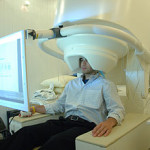By CLEO
Applications & Technology (A&T) is a key conference at CLEO: 2014, exploring the evolution of newly discovered technologies previously reported in CLEO: Science & Innovations as they are perfected and further developed to meet system and application requirements. New components, optoelectronics, and laser systems are demonstrated in real-world environments where innovative commercial technologies emerge.
Yu Chen, University of Maryland, Program Co- Chair provides an overview of this year’s A&T symposium and paper highlights.
CLEO Team:
Discuss the exciting lineup of symposia that are A&T related? What are some of the hot topics being covered?
Yu Chen:
This year we have organized a series of exciting symposia. The first two are focused on biomedical applications. The first one is Advances in Neurophotonics, organized by Drs. Nick Iftimia and Jin Kang. This symposium highlights the photonics technologies that enable mapping of brain function. This is an important research area as highlighted by President Obama’s recent BRAIN Initiative. We have invited leaders in this field to share their frontier research. Topicscovered include optical coherence tomography and multi-photon microscopy for neuroimaging, high-resolution imaging of brain networks and diseases, and optogenetics.
 Patient undergoing MEG. Source: Wikipedia Commons
Patient undergoing MEG. Source: Wikipedia Commons
The second area of application is Molecular Imaging, which is an interdisciplinary area intersecting photonics technology and molecular medicine, with great potentials for early disease detection and personalized treatment. This year’s symposium, organized by Drs. Xavier Intes and Ali Azhdarinia, contains two sessions: one focuses on novel optical molecular imaging techniques, including near-infrared fluorescence imaging, Cerenkov radiation imaging, and photoacoustic imaging. The other session focuses on molecular probe development and clinical translation. The speakers are renowned scientists, clinicians, and industrial leaders that set the trend in this field.
The next two symposia are more technology oriented. The first one is Novel Light Sources and Photonic Devices in Optical Imaging, organized by Drs. Charles Lin, Nick Iftimia, and Ben Vakoc. This symposium highlights the advanced development of novel light sources and photonic technologies that enable biomedical imaging. Topics include novel light sources for nanophotonics-based OCT, as well as deep tissue multiphoton imaging and manipulation.
The next symposium has similar theme, but more focuses on Ultrashort Pulse Laser Technologies. Organizedby Drs. Ilko Ilev and Emma Springate, this symposium highlights the recent state-of-the-art development in ultrafast laser technologies for biophotonics and nanobiophotonics. Topics include ultrafast compact fiber lasers; tunable ultrafast visible, near- and mid-IR lasers; plasmonic nanobuble based integrated theranostics, and ultrafast laser induced ion beams for proton therapy.
The next hot topic is Optofluidic Microsystems, organized by Drs. Ian White and Andreas Vasdekis. This symposium aims to highlight emerging trends in optofluidics and their application in microsystems. This year’s program will feature an overview of the last ten years of optofluidics by one of the founding fathers of the field, Dr. Dmitri Psaltis, and will also project into the future by talks from current leaders in the field. Topics include optofluidic lasers and resonators, optofluidics for energy, and optofluidic particle manipulations.
CLEO Team:
What exciting papers did you receive for Applications & Technology?
Yu Chen:
We have a large affluence of papers for the light sources, resulting from the success of last year’s symposium on novel light sources. We also have papers focused on Neurophotonics, as stimulated by this year’s symposium. Our program includes new developments in OCT, multiphoton microscopy, and photoacoustic imaging, as well as clinical translation. Some of the example hot topics include adaptive optics for ophthalmology, point of care devices based on smart phones, minimally-invasive imaging technologies for disease diagnosis and therapy guidance, endomicroscopy, as well as multi-modal imaging combining OCT with fluorescence/confocal.
CLEO Team: Thank you
The CLEO Conference, sponsored by APS/Division of Laser Science, IEEE Photonics Society and the Optical Society received record-breaking submissions this year. The Conference takes place in San Jose, CA, USA, 8-13 June 2014.
For more information on CLEO: 2014 and the A&T program please visit www.cleoconference.org.
Posted: 21 March 2014 by
CLEO
| with 0 comments